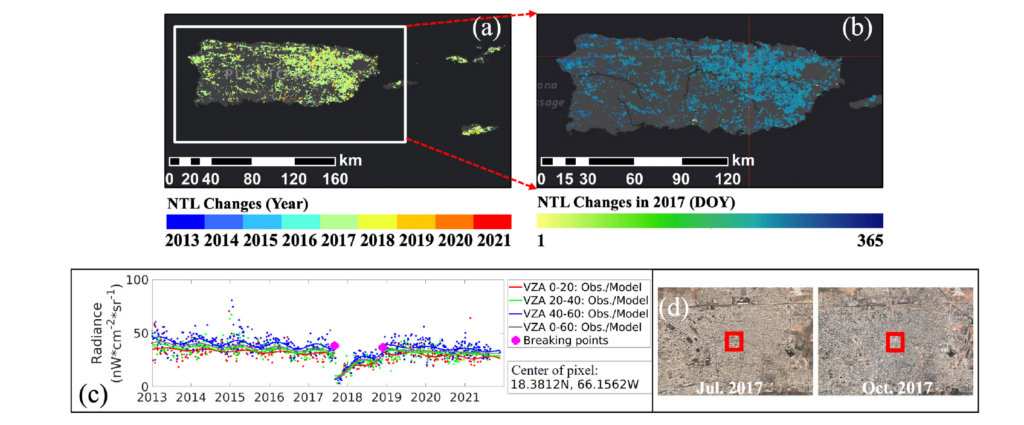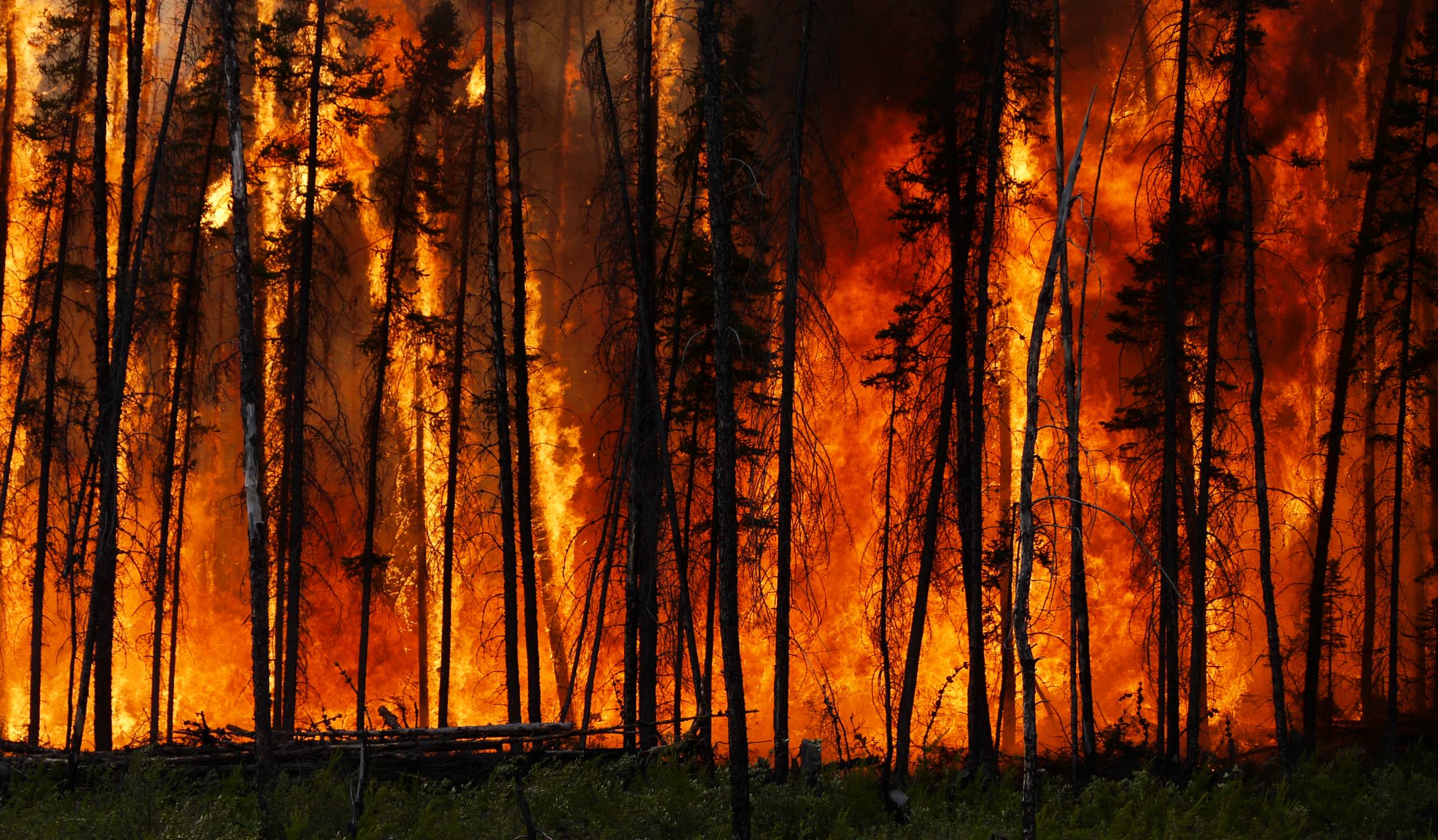
ESSIC Scientist Zhuosen Wang has a new paper in Remote Sensing of Environment that proposes the use of NASA’s Black Marble products to monitor nighttime light changes.
Nighttime light (NTL) tells us a lot about the dynamic patterns of human activity and socioeconomic features. NASA’s Visible Infrared Imaging Radiometer Suite (VIIRS) Day/Night Band (DNB) atmospheric- and Lunar-BRDF-corrected Black Marble product (VNP46A2) provides daily global nighttime radiances with high temporal consistency. However, timely and continuous monitoring of night time light changes based on the dense daily DNB time series is still lacking. In the study, Wang and colleagues propose a novel Viewing Zenith Angle (VZA) stratified COntinuous monitoring of Land Disturbance (COLD) algorithm (VZA-COLD) to detect NTL change at 15 arc-second spatial resolution with daily updating capability based on NASA’s Black Marble products. The NTL change product (VNP46A5) based on this algorithm is expected to be released to the public from early next year.
Wang is an Associate Research Scientist with research interests in monitoring human activities using Suomi-NPP and NOAA-20 VIIRS Day/Night Band nighttime light observations; modeling and evaluation of land surface anisotropic characteristics and albedo; and canopy structure estimation using optical remote sensing and Lidar. He is the principal investigator of NASA’s Black Marble nighttime product suite.
To access the article, click here: “Continuous monitoring of nighttime light changes based on daily NASA’s Black Marble product suite”.





